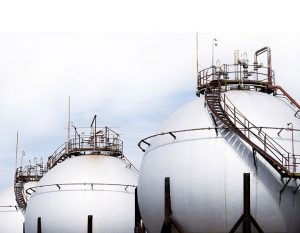The Ministry of Electricity and Energy (MOEE) is aiming to supply liquefied petroleum gas (LPG) to one million households by 2020, U Win Khine, Minister of the MOEE said at a meeting with companies involved in the import, storage, distribution and marketing of LPG last week.
LPG can replace the use of electricity as a fuel for household cooking, which will help to conserve power as well as the environment. This will be beneficial to residents in rural areas, who do not have access to electricity, the minister said.
Last December, Parami Energy Services Company won a K6.5 billion government tender involving the lease of a jetty, terminal and storage facility at the Thanlyin refinery in Yangon Region, for the purpose of importing, storing and distributing LPG in Myanmar.
It was the first time the government has leased out state-owned facilities under a Public-Private Partnership for the import, storage and distribution of LPG in Myanmar. In the past, these were conducted solely by state-owned Myanmar Petrochemical Enterprise.
Currently, LPG is mainly imported from Thailand through the Myawaddy border. Some quantities are imported from China. Officially, Myanmar imports 4,000 tonnes of LPG per month, but the real number could be as high as 7,000 tonnes per month, U Pyi Wa Tun, CEO of Parami Energy, told The Myanmar Times during a January interview. At the time, Parami Energy had a total of 1,800 tonnes of LPG ready for sale.
However, available supply is currently not enough to meet demand from the industrial, commercial and household sectors. Nationwide, LPG consumption is around 100,000 tonnes annually and this is expected to grow as there are now more hotels, restaurants and other businesses that require LPG.
Over the longer term, Parami Energy aims to import at least 8,000 tonnes – 10,000 tonnes of LPG a month. It has already invested around $3 million to renovate the jetty and terminal as well as build the filling stations.
U Pyi Wa Tun said that at just 5 meters, the water depth at Thalyin only allows vessels with the capacity to transport up to 2,000 tonnes of LPG to dock at its jetty. So, additional investments will need to be made to raise that capacity.
There are currently just three State-owned LPG factories in Myanmar located in Minbu, Nyaung Don and Kyun Chaung. Total production capacity of the factories is 30 tonnes per day. LPG produced by the State-owned factories is supplied to the local market, the MOEE said.
Sources: Myanmar Times

